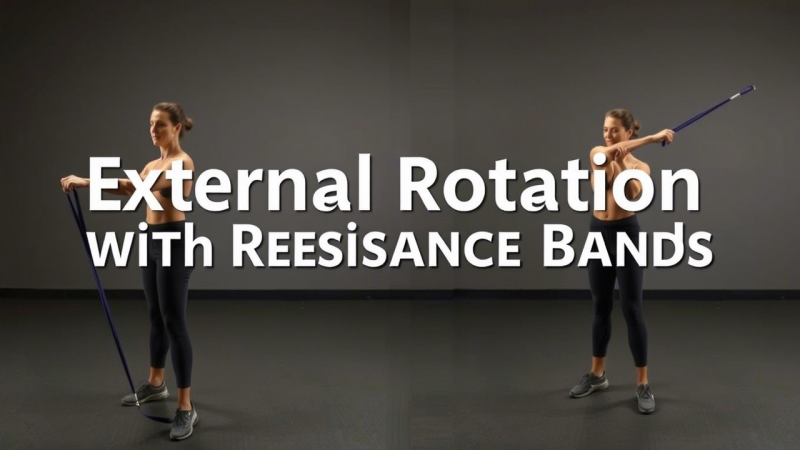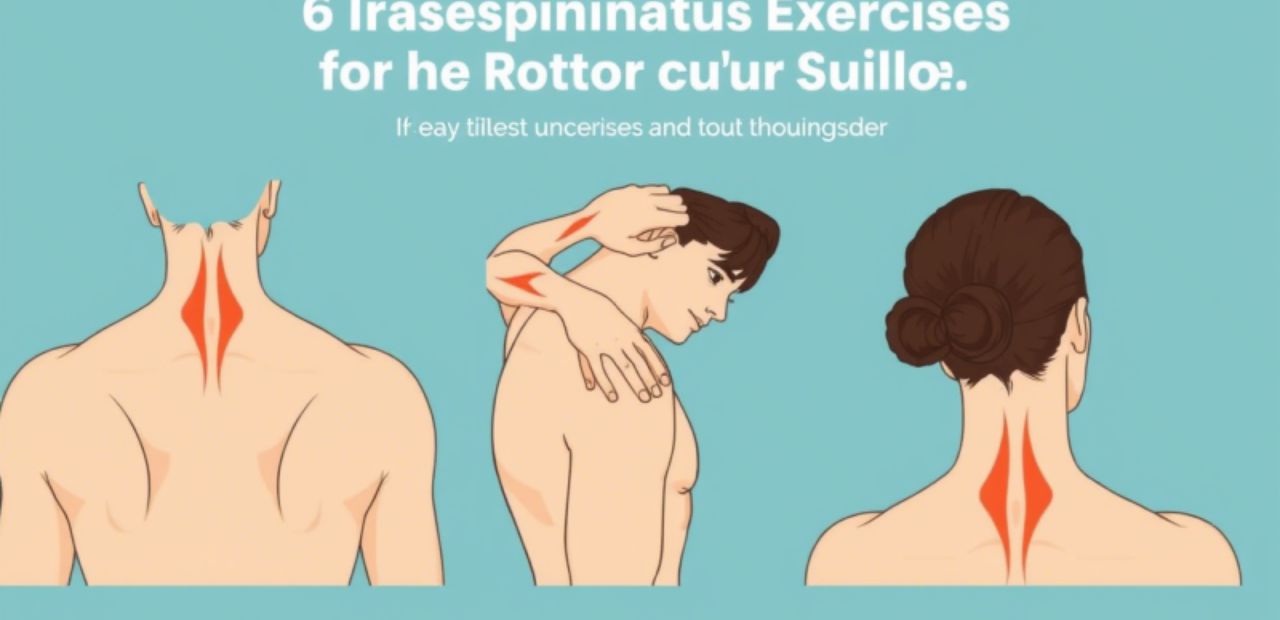The rotator cuff is a group of four muscles that provide stability and mobility to your shoulder joint. One of these muscles, the infraspinatus, plays a crucial role in shoulder rotation and movement.
A weak or injured infraspinatus can lead to discomfort and reduced shoulder function. Fortunately, there are a number of simple and effective infraspinatus exercises that can help strengthen this muscle, improve shoulder health, and reduce the risk of injury.
In this article, we’ll take a look at 6 easy infraspinatus exercises that can help you improve your rotator cuff strength and stability, so you can keep your shoulders strong and healthy.
External Rotation with Resistance Band

Why It Works:
The external rotation exercise specifically targets the infraspinatus muscle, making it one of the most effective movements for strengthening the rotator cuff.
How to Do It:
- Attach a resistance band to a stationary object at waist height.
- Stand sideways, holding the band with your outer hand. Your elbow should be bent at 90 degrees, and your upper arm should be close to your body.
- Rotate your forearm outward, keeping your elbow fixed at your side.
- Slowly return to the starting position.
- Repeat for 2–3 sets of 10–12 reps on each arm.
Lying Down External Rotations
Why It Works:
This exercise isolates the infraspinatus and provides a controlled movement to focus on rotator cuff strength without straining other muscles.
How to Do It:
- Lie on your side with your affected shoulder on top. Hold a lightweight dumbbell in your top hand, and place a rolled-up towel or small pillow under your elbow for support.
- Bend your elbow to 90 degrees, keeping the upper arm parallel to the floor.
- Rotate your arm outward, bringing the dumbbell toward the ceiling, and then slowly lower it back to the starting position.
- Complete 2–3 sets of 10–12 repetitions on each side.
Prone Reverse Fly

Why It Works:
The reverse fly works the entire shoulder complex, including the infraspinatus, while also engaging other important stabilizing muscles in the back.
How to Do It:
- Lie face down on an incline bench or a flat surface, holding a dumbbell in each hand.
- With your arms extended straight below you, raise your arms out to the side until they’re level with your shoulders.
- Squeeze your shoulder blades together at the top of the movement, then lower the weights back to the starting position.
- Perform 2–3 sets of 10–15 reps.
Shoulder Pendulum Swings

Why It Works:
This gentle exercise helps improve shoulder flexibility while promoting circulation around the rotator cuff muscles, including the infraspinatus.
How to Do It:
- Stand next to a table or chair and lean forward slightly, supporting yourself with your non-injured arm.
- Let your affected arm hang down loosely and gently swing it in small circles.
- Gradually increase the size of the circles and switch directions after 30 seconds.
- Repeat for 1–2 minutes.
Doorway Stretch
Why It Works:
The doorway stretch helps improve flexibility in the shoulders, targeting the infraspinatus, and can aid in recovery from shoulder tightness and discomfort.
How to Do It:
- Stand in a doorway and place your arms on the doorframe, with your elbows at a 90-degree angle.
- Slowly step forward with one leg until you feel a gentle stretch in your shoulder.
- Hold the stretch for 20–30 seconds and repeat 2–3 times.
Rotator Cuff Isometric Holds

Why It Works:
Isometric exercises are great for building strength in the rotator cuff muscles without requiring extensive movement, which is especially helpful during the early stages of rehabilitation.
How to Do It:
- Stand with your elbow bent at 90 degrees and the forearm parallel to the ground.
- Press your hand against a wall or sturdy surface, engaging the infraspinatus as you try to rotate your arm outward, but keep the position stationary.
- Hold the isometric contraction for 5–10 seconds, then rest.
- Perform 2–3 sets of 10–12 repetitions.
Benefits of Strengthening the Infraspinatus
Regularly practicing infraspinatus exercises helps:
- Prevent shoulder injuries – Strengthening the rotator cuff muscles reduces the risk of common shoulder injuries.
- Improve shoulder mobility – Stronger muscles around the shoulder joint allow for better movement and less discomfort.
- Support athletic performance – Whether you’re lifting weights, playing sports, or simply lifting objects, a strong rotator cuff improves overall function.
Conclusion
By incorporating these 6 easy infraspinatus exercises into your fitness routine, you can significantly strengthen your rotator cuff, protect your shoulders from injury, and improve overall shoulder mobility. Whether you’re recovering from a shoulder injury or looking to maintain healthy shoulder function, these simple exercises can make a big difference.
If you’re new to these exercises, remember to start slow, use light weights or resistance, and gradually increase the intensity as you get stronger. Always consult with a healthcare professional if you’re recovering from a shoulder injury or have any concerns about your rotator cuff health

Emily Rose Johnson is a passionate writer with a knack for crafting engaging content. She specializes in communication strategies, digital marketing, and creative storytelling.









